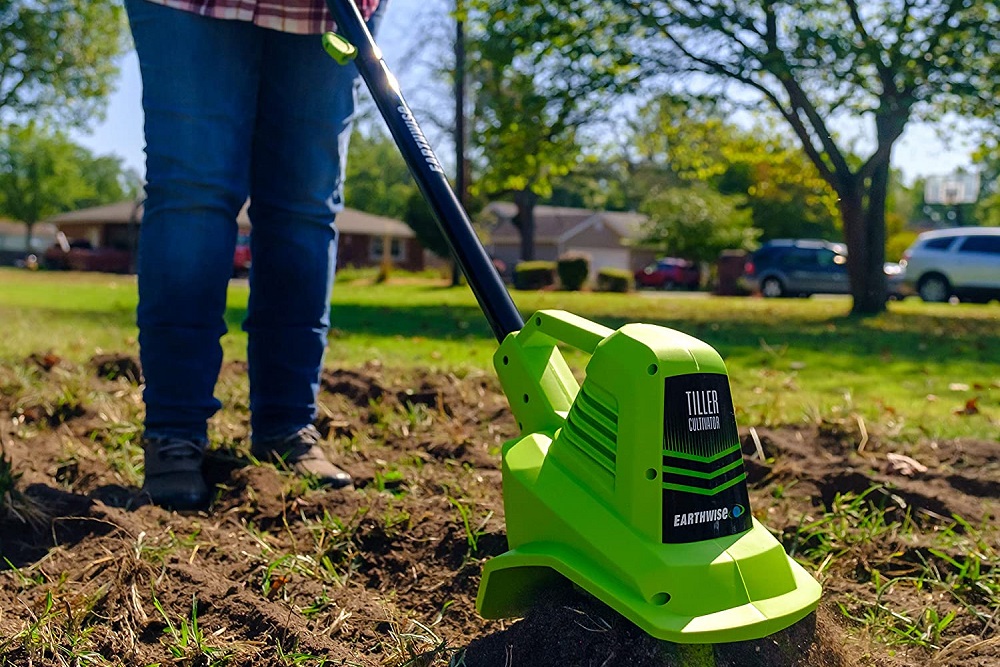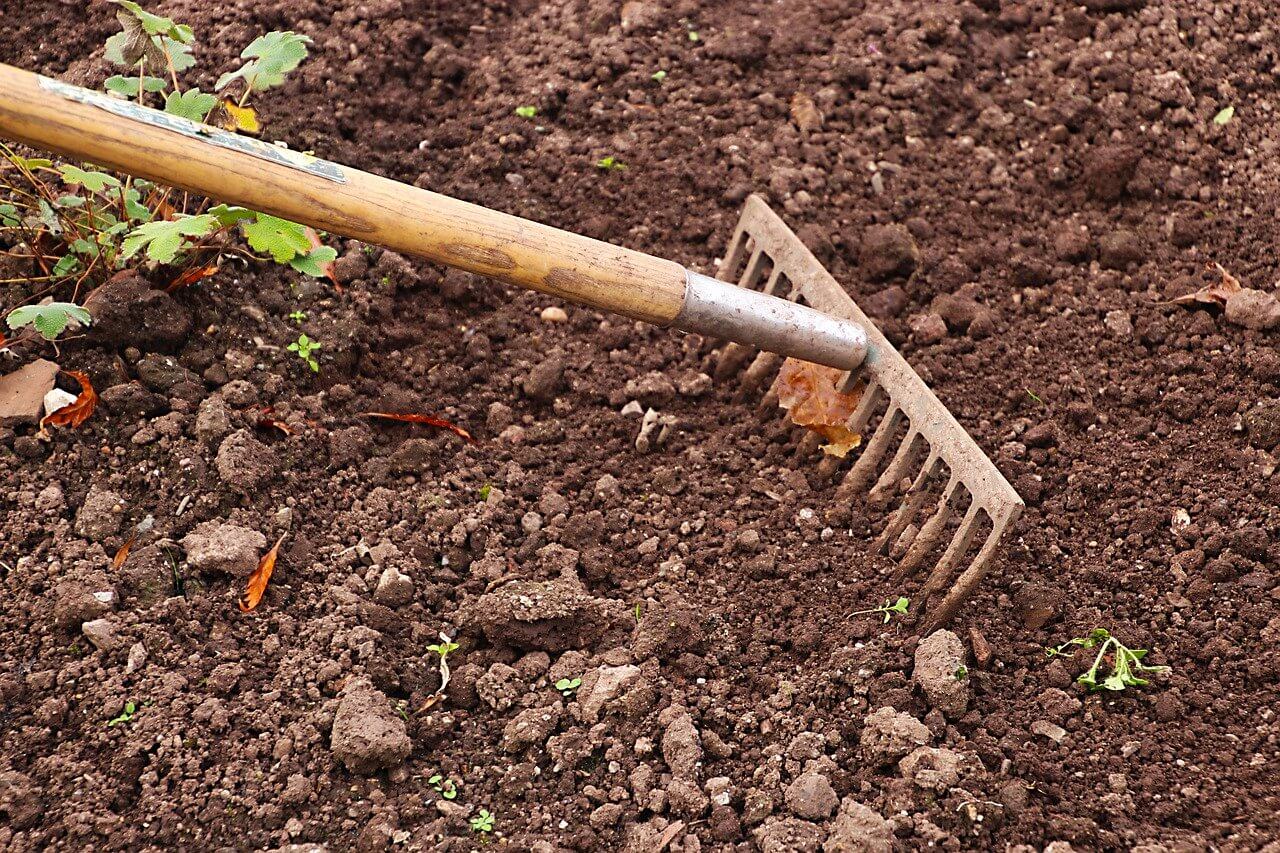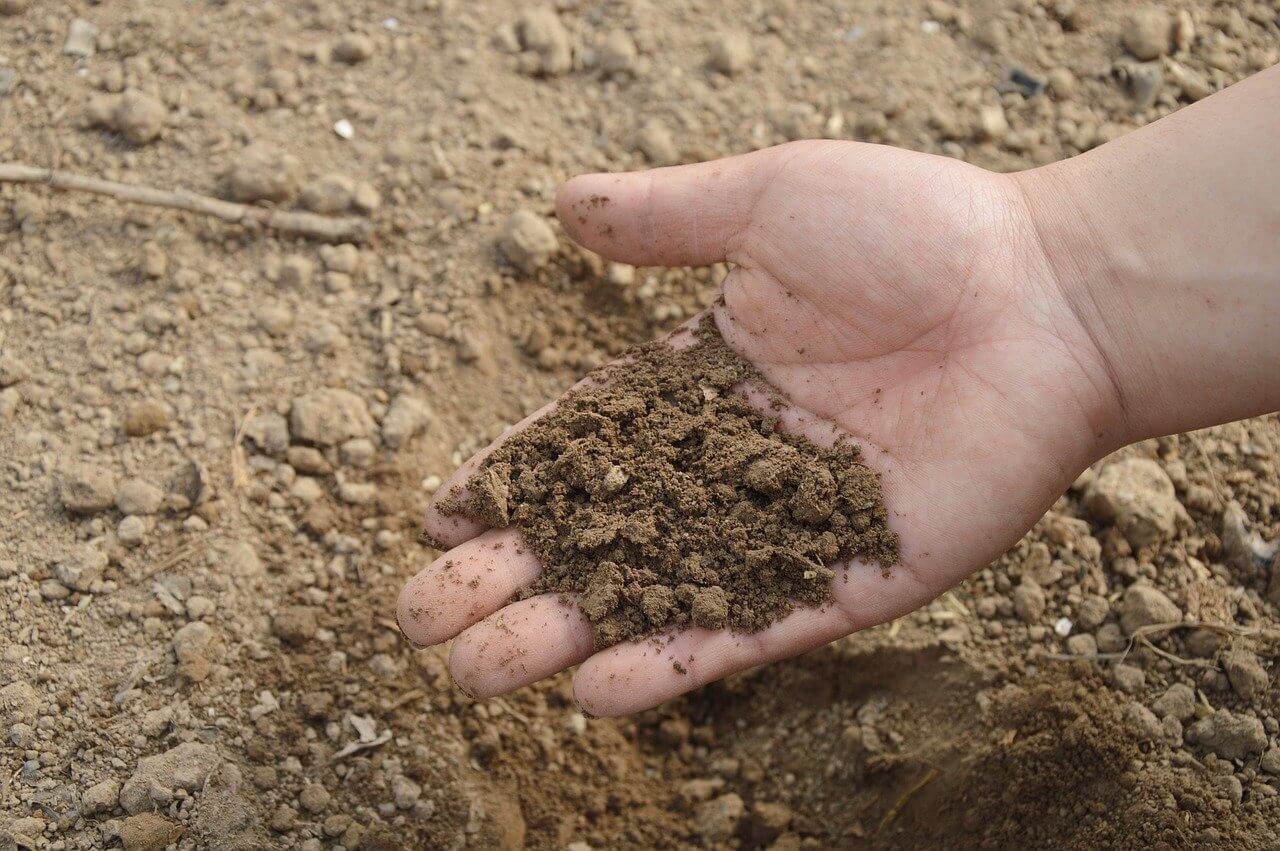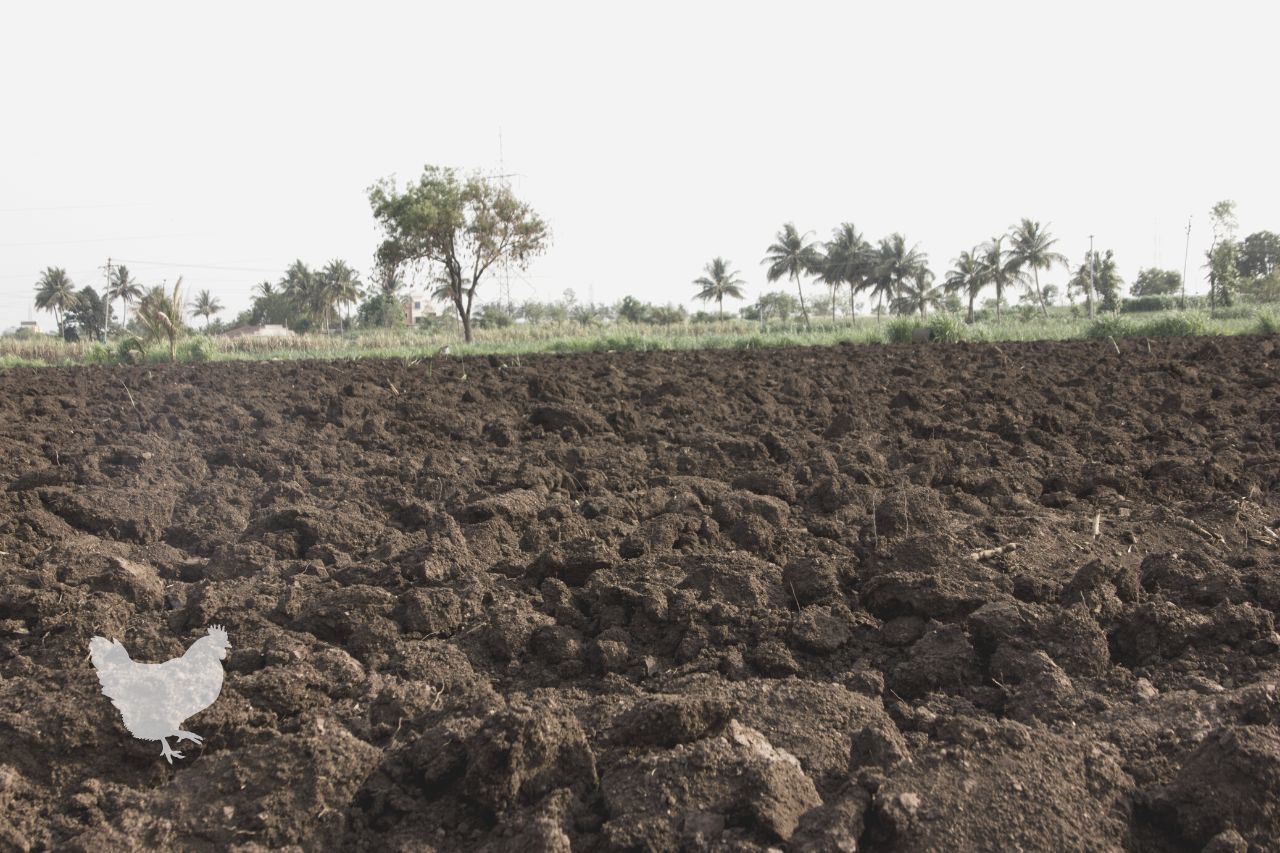Before discussing the advantages and disadvantages of subsoiling, we had better talk about what “subsoil” is.
The subsoil is the layer of soil laying directly under the topsoil. Like topsoil, it consists of a mixture of varied small particles such as clay, sand, and silt. It has a much lower percentage of humus and organic matter and a small number of rocks, smaller in size, mixed in with it. The subsoil is also known as B Horizon.
What You'll Learn Today
- What Is Subsoiling?
- What Are Some PROS of Subsoiling?
- What Are Some CONS of Subsoiling?
- When Should You Use a Subsoiler?
- To Subsoil or To Plow — That is the Question
- Frequently Asked Questions
- What’s the difference between in-row subsoiling and traditional tilling?
- When would you choose in-row subsoiling over no-till methods?
- Are there any circumstances in which subsoiling would cause negative results:
- Why do farmers tend to choose traditional tilling over subsoiling?
- When might a commercial farmer choose to use subsoiling methods?
- What causes fragipan soils and how does this condition impact crops?
- Once you start subsoiling, do you have to apply it every year in the springtime?
- Why does subsoiling work to improve soil performance?
- How much is the surface of the soil disturbed by subsoiling?
- Can you use subsoiling methods if you grow a cover crop?
What Is Subsoiling?

Subsoiling is the minimal loosening of dry subsoil to form cracks enabling it to become porous.
Soil health is critical to the success of any farm, regardless of its size. The condition of your soil more or less correlates with what you can grow from it.
Some soils are naturally low maintenance, whereas others want to be coaxed along by subsoiling. Subsoiling at a 12 to 18 inches depth will help increase root aeration and give water a place to go.
But even healthy soil can be too dry or tight to allow water access and can benefit from subsoiling.
But regardless of whether your nutrient and mineral levels are where you desire them to be, you could still have a compressed layer of soil.
If this is the case, water will collect on the soil’s surface, appearing that proper hydration is present.
But actually, tight and dry earth stops water from penetrating it. All the water you see cannot reach the deep roots to nourish them. Subsoiling can correct this problem.
Subsoiling translates to more nutrient and mineral-rich soil, affecting the yield and ultimately your bottom line.
Even healthy soil can become too dry and tight to allow water access and, therefore, can benefit from subsoiling.
What Are Some PROS of Subsoiling?

Subsoiling lifts the soil and breaks apart the formation to create looser and more ‘aerated’ soil, permitting nutrients to flow, thereby encouraging root growth.
Before another planting season, here are some reasons why you should consider subsoiling as a routine project each growing season.
Eliminates Soil Compaction
Subsoiling is essential in high traffic areas such as feed-out areas, water troughs, gateways, and if compaction is higher than the rest of the earth. Aerated soil enables deeper and more vigorous root growth for healthier plants and crops.
Improves the Drainage of the Soil
There is also much better drainage of surplus groundwater in aerated soil, reducing and eliminating ponding and surface water on your fields.
In addition, the benefit of reduced runoff is that the water is ‘soaked’ into the ground along with any nutrients that enhance growth.
Promotes Deeper Root Development
Keep in mind that soil compaction hampers root growth and the depth to which they can grow. Subsoiling enables the broken-up ground to offer encouraging conditions for better development of the roots.
The result is more vigorous and deeper root structures that absorb more nutrients. It also provides greater resilience in dry weather, enabling pastures and crops to sustain for longer periods.
Encourages Absorption of the Fertilizer
When soils are compacted or are less porous, fertilizer is wasted. This is because the fertilizer is unable to be absorbed into the ground — it simply vaporizes or washes off the surface rather than into the surface.
After the soil is aerated and porous, the fertilizer absorbs into the ground and is readily absorbed by the roots.
Greater Penetration of the Soil
Enhanced permeation of soil ensures that the level of oxygen in the soil is increased as it flows more freely into the porous ground. It speeds up plant growth as more oxygen becomes available at the root level.
When compacted, there are decreased oxygen levels and increased carbon dioxide levels in the ground, causing a slowdown in growth.
Increased Pasture Growth
The primary reason farmers end up aerating and subsoiling their fields is to increase pasture growth. It has been proven that you can receive a 22% increase in pasture growth by aerating and subsoiling.
What Are Some CONS of Subsoiling?

Just like other production practices, subsoiling also has its disadvantages. Before renting subsoiling equipment, it’s imperative to consider the following disadvantages.
It Erodes the Soil
Subsoiling lifts and loosens the soil, making it prone to erosion. The organic material on top — both decaying and living — helps keep the nutrient-rich, valuable topsoil in place.
But when you subsoil, everything is uprooted and mixes up the organic material. That causes the best soil to wash away in heavy rains or blow away in blustery winds.
Destroys Soil Life
It is agreed that subsoiling makes the ground more fertile, but the effect is temporary. Soil fertility is derived from the decaying of soil life. Regular tilling or subsoiling will destroy the life in the soil, causing fertility to disappear.
During subsoiling, primarily when performed with machines, all sorts of extraordinary worms, insects, and microorganisms that work on behalf of farmers are destroyed. When alive, they offer constant fertility.
Causes the Soil to Dry Out
During the late winter months or in early spring, many farmers in the United States rush to get the soil tilled, enabling it to dry out.
This drying out also kills the microorganisms and soil life. Instead, farmers, after setting up no-till raised farms, usually manage to improve drainage.
Waterlogged soils can be a real problem but can be avoided by using raised beds and the continuous addition of organic material to the top of the soil. The life in the soil will work to incorporate it into the existing soil.
Promotes Weed Growth
Subsoiling helps eliminate weeds by chopping the roots up and destroying existing plant life. While the chopped-up roots theory is not entirely wrong, the problem is turning the soil exposes an array of dormant weed seeds to the elements that may grow from root cuttings.
Basically, it is encouraging new weeds to propagate, as a weed’s favorite spot to propagate is in disturbed soil.
Effects of Subsoiling Are Not Long-Lasting
Subsoiling and tilling, in general, are not for the long term. It is known to provide fertility but destroys the soil life, which is the source of long–term fertility.
It also opens up water and wind erosion avenues, which sweeps away the quality topsoil and leaves growers with infertile subsoil to work with. Instead, it pays to feed and nurture the soil, working with it rather than destroying it.
Can Be Labor-Intensive
Subsoiling is back-breaking work. Even with the use of a machine, which can make the task easier, but still is not an easy process. Nevertheless, the new no-till methods popular today are kinder to the farmer and the soil.
We no longer have to dig up cumbersome and heavy dirt, turn it, and chop it up. Today you add compost and mulches to the top each year, and fertile soil with good structure builds itself via a natural process.
When Should You Use a Subsoiler?
A flat lifter or subsoiler is a tractor-mounted piece of farm machinery used for loosening, and the breaking up of soil and deep tillage at depths below the levels worked by plows, cultivators, rototillers, and disc harrows.
Most tools of this type will break up and turn over surface soil to a depth of 5.9–7.9 inches or 15–20 cm. A subsoiler can break up and loosen the soil to twice that depth.
While there are various ways to alleviate soil compaction that impacts surface soil, compacted subsoil is more challenging to handle. For this reason, it’s essential to understand the subsoiling process.
To Subsoil or To Plow — That is the Question

Subsoilers often feature a single or perhaps two standards, but plows feature a series of standards. The frog or standard is the central part of the plow bottom, to which other components of the base are attached.
It is an irregularly-shaped piece of metal, which may be made of cast iron for cast iron plows or welded steel for steel plows. The frog or standard is the foundation of the plow base or bottom.
Ultimately, this means plows need to have closer space between each standard, whereas subsoilers often have wider spacing.
A subsoiler’s blade or shank can penetrate up to 20 to 45 inches into the soil, twice what you could expect from a plow that works shallower.
Plows usually need more engine power for the same working width as subsoilers, and they’re more cumbersome to handle because of how they’re mounted to the tractor.
On the other hand, the top models also have a much larger working width, making them more attractive on expansive fields.
Experts say a farmer has three options regarding subsoiling:
- Never subsoil
- Subsoil yearly
- Subsoil occasionally
However, research has revealed that subsoiling every other year or so has the same benefit as subsoiling every year. This is great news for farmers because of the expense involved.
So whether you prefer to plow your field or use a subsoiler is simply a matter of choice.
If you are interested in seeing a descriptive video showing the subsoiling process, refer to the video below. It is very good and quite informative!
Frequently Asked Questions
What’s the difference between in-row subsoiling and traditional tilling?
In-row subsoiling (aka: strip tillage) barely disturbs the soil surface. Instead, this method fractures the soil beneath the surface to allow better air and water circulation. This method of “tilling” combines the benefits of no-till and traditional tilling methods into one by maintaining the health and integrity of the surface soil while improving the condition and arability of the subsoil.
When would you choose in-row subsoiling over no-till methods?
If your soil has been very compacted by the use of heavy equipment, in row-subsoiling might work better than the no-till method. If you have tried amending the surface of your soil with organic matter and liquid amendments for a couple of seasons without good results, you may wish to try subsoiling as a way of improving the subsoil while maintaining the good you have done so far with soil additives and amendments.
Are there any circumstances in which subsoiling would cause negative results:
If your soil is considered Highly Erodible Land (HEL), subsoiling will damage it more than it will help it. In this case, you are better off gently and patiently amending the surface of soil to improve its condition. Tilling and subsoiling and otherwise disturbing HEL can cause more erosion and loss of nutrients.
Why do farmers tend to choose traditional tilling over subsoiling?
Sometimes the timing for subsoiling can be tricky, and the process is a bit more expensive than traditional tilling. So far, quick crop increases with subsoiling have been negligible when compared to traditional tilling, so for commercial crops most farmers stick with traditional tillage.
When might a commercial farmer choose to use subsoiling methods?
Fragipan soil is the term used to refer to soil that has a naturally hard texture at shallow depths. Good results have been attained by using subsoiling methods on fragipan soils that have also be consistently treated with no-till methods for many years. Studies conducted at Pennsylvania State University found that consistently applying subsoiling techniques to this soil combination at the start of the growing season for three consecutive years eventually improved the soil’s ability to drain and retain moisture correctly. the end result was an 11% increase in crop yield.
What causes fragipan soils and how does this condition impact crops?
Fragipan soils are very dense and compacted (e.g. by use of heavy equipment). This type of soil typically has relatively large amounts of clay and becomes very hard when dry and very soft when wet. There is very little water movement through fragipan. This state of affairs causes slow water percolation, limited rooting depth, and difficulties in root penetration.
Once you start subsoiling, do you have to apply it every year in the springtime?
No, the good results of the PSU study indicate that you may be able to remedy your fragipan problem with several years of consistent application. Once you’ve attained the results you want, you may be able to move forward with the no-till method most years and just apply subsoiling every two or three years.
Why does subsoiling work to improve soil performance?
In-row subsoiling improves soil penetration resistance to a depth of about fourteen inches. This means that soil below the surface absorbs water and nutrients more efficiently and allows healthy air circulation among the soil particles. This promotes good root development and better overall plant growth.
How much is the surface of the soil disturbed by subsoiling?
Ideally, the soil surface should barely be disturbed – no more than 20%. This will leave your no-till amendments in place and will keep your beneficial fauna and bacteria strong and healthy.
Can you use subsoiling methods if you grow a cover crop?
This is certainly possible. Your cover crop may be disturbed a bit by the process, but it should soon rebound. Keeping a cover crop over soil that is also treated with no-till amendments and subsoiling could certainly provide added benefits to your primary crop.
Do you think it’s good when a new farmer like me applies this subsoiling technique?
I am new farmer and my land is silly. I never ever planted but now wanna grow something .
please let me know sub soilling is best for fresh and silly land?